1. “15 by 2015”
U.N. Secretary-General Ban Ki-moon called world leaders and health experts together at this summer’s high level meeting on HIV/AIDS to evaluate global progress in the AIDS fight. Given the compelling evidence that treatment doubles as prevention, the United Nations upped the “universal access” goal to 15 million people on medication by 2015. Some say it can’t be done. The U.N. and Ban Ki-moon say it must. We second that emotion.
2. ACT V
It takes a bold vision and balls to change the world. Leigh Blake (cofounder of the Red Hot Organization and founder of Artists Against AIDS Worldwide and Keep a Child Alive) and Paul Zeitz (formerly from the Global AIDS Alliance and also KCA), have both. They just launched ACT V—a digital, global movement to end the HIV/AIDS crisis by 2020. Their plan? Use artists and musicians to bring attention to the cause, then turn ordinary people into AIDS activists. With friends like Bono and Jay-Z, chances are they’ll build an army.
3. AIDS.gov
Remember when President Reagan wouldn’t say “AIDS”? These days the U.S. government has an entire site devoted to it. Launched Dec. 1, 2006, by the U.S. Department of Health and Human Services, AIDS.gov blends the power of new media with government health care prowess. It’s an electronic bandstand for our community voices, stories and feedback. The site, manned by Miguel Gomez, is a great example of how national dialogue gets digitally delivered to decision makers. Yes, the White House looks at it.
4. AIDS Project Los Angeles (APLA)
From nutritional to dental needs, mental health to adherence, housing to policy, few AIDS service orgs offer such a complete lineup of services. APLA sets a gold standard for how to treat people with HIV. Led by executive director Craig Thompson, it boasts a star-studded board including the honorable John J. Duran, mayor of West Hollywood who is HIV positive. Recently, the mighty APLA relocated its prevention program to a new site in Baldwin Hills in South LA, proving that wherever AIDS goes, APLA will follow.
5. The Ali Forney Center
Providing a safe haven for runaway LGBT youth, the center, run by executive director Carl Siciliano, becomes home for some of the 25 percent of teens who are rejected by their families after coming out. Homeless LGBT youth are more likely than their straight peers to experience physical violence (on the streets and in shelters), trauma, mental health issues, HIV infection and substance abuse. The center succeeds at giving forsaken LGBT kids a new lease on life. We’d like to see this NYC-based center become a runaway hit all across America. 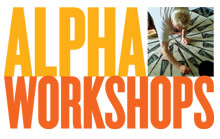 6. Alpha Workshops
6. Alpha Workshops
Founded in 1995 by Ken Wampler, the NYC-based nonprofit trains people living with HIV as decorative artists. Students are taught things like how to make hand-printed wallpapers and create decorative and faux finishes. Once trained, they are hired by the studio (past projects include restoration work in the mayor’s Gracie Mansion and the ballroom of the Prince George Hotel) or they work as professional artists. We like the idea of giving people whose lives have turned ugly due to HIV a chance to make their world beautiful again.
7. amfAR
What’s not to love about amfAR, the Foundation for AIDS Research? Cofounded by the amazing Mathilde Krim, PhD, with Dame Elizabeth Taylor, amfAR is headed by the fearless cure-hunter Kevin Frost and has social marketing genius designer Kenneth Cole as its board chair. It has one of the best AIDS policy shops on Capitol Hill, which is spearheaded by Susan Blumenthal, MD, (see No. 14) and Chris Collins (see No. 24). It also runs the ARCHE consortium that has revolutionized global scientific collaboration around cure research, and its Treat Asia program has turned AIDS care on its head in the Pacific Rim. But amfAR is best known for throwing soirees that attract the likes of Sean Penn, Robert De Niro and H.S.H. Prince Albert of Monaco—and raising $10 million for AIDS cure research in a single night. (Full disclosure: POZ editor-in-chief Regan Hofmann is on the amfAR board.)
8. APICHA’s Transgender Clinic
Given its history of delivering progressive health services to under-the-radar communities in need, it’s no surprise that the Asian and Pacific Islander Coalition on HIV/AIDS, led by Therese Rodriguez, chose to recently open the doors of this much-needed clinic. The clinic is designed to deliver comprehensive medical services, including hormone therapy and mental and social support services, for transgender people. APICHA’s multi-lingual, multi-cultural staff is fluent in 17 languages. They also translate care into compassion and understanding.
9. AIDS Vaccine Advocacy Coalition (AVAC)
Treatment activists from ACT UP New York founded AVAC in 1995 to speed up the development of HIV vaccines. Today, AVAC also has its sights set on biomedical HIV prevention (like microbicides , PrEP and treatment as prevention), treatment for genital herpes (HSV-2) and the protective powers of male circumcision and cervical barriers. CEO Mitchell Warren is an outspoken advocate who writes regularly in the Huffington Post about the power of prevention. He was one of the first out of the gate this year to publicy tout the “we can end AIDS” beat.
10. B Condoms
Their motto is “b cool. b safe. b yourself.” Their mission? To reduce suffering and deaths due to sexually transmitted infections in the most affected segments of the U.S. population (think: disenfranchised African Americans and Latinos). Their premium products are handed out in hardest hit areas—American ’hoods where HIV infection rates rival those of sub-Saharan Africa. A portion of their sales is donated to people and organizations that work to prevent STIs. Giving incentives for those who save lives? Smart.
11. Françoise Barré-Sinoussi
She is the International AIDS Society president-elect, and along with Steven Deeks, MD, from the University of California San Francisco, she heads an international researchers’ working group of 40 people focused on developing a global scientific strategy to cure AIDS and to better understand HIV reservoirs. The strategy, “Towards an HIV Cure,” will be launched at a scientific symposium in advance of the International AIDS Conference (see No. 50) in DC next summer. She codiscovered HIV. Here’s hoping she helps the world lose the virus once and for all.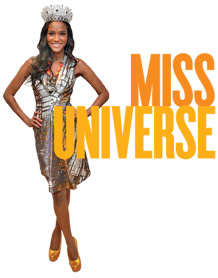 12. Beauty Queens with a Conscience
12. Beauty Queens with a Conscience
The standing platform for Miss Universe is always HIV/AIDS. This year’s winner, Angolan beauty Leila Lopes, will follow in the high-heeled footsteps of former Miss Universes raising AIDS awareness and teaching safer sex around the globe. We’ve already seen her on the AIDS fund-raising circuit drawing attention and dollars. Pretty is as pretty does.
13. Edwin Bernard
The London-based global expert on criminalization of people with HIV is a policy consultant for nongovernmental organizations. He’s a rabid blogger (read him on POZ.com) and author, whose first book, Criminal HIV Transmission, educates those working in, and with, the criminal justice system. He also launched the HIV Anti-Criminalization Network, an international web of advocates working to end the criminalization of nondisclosure, exposure and non-intentional transmission. For his defense of our civil liberties, we say, hear, hear!
14. Susan Blumenthal, MD
In June, the senior policy and medical adviser of amfAR and former assistant U.S. surgeon general gathered the who’s who of HIV/AIDS for a congressional briefing on Capitol Hill. Domestic and global AIDS pros and scientists took the podium one after another and said the same thing: We can stop AIDS. The audience, a mixture of Congress and press, listened hard. It was the first megadose of messaging about ending AIDS we heard this year. And, it was compelling. Many left the room a believer.
15. Bob Bowers
The self-labeled “One Tough Pirate” was recently called an “embittered dissident” by those trying to discredit his cries of foul play directed at the Madison (Wisconsin) AIDS Network. Surviving more than 25 years of HIV himself, Bowers lobbies for more equitable funding, accountability, transparency and a revitalization of HIV/AIDS services. He also educates youth about HIV/AIDS. Part of the group that reactivated ACT UP Wisconsin, he is also the state’s organizer for the Campaign to End AIDS. Call him names if you will. It only makes him swashbuckle harder.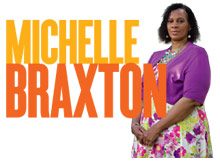 16. Michelle Braxton
16. Michelle Braxton
An African-American woman living in New Jersey, the state with the highest percentage of women living with HIV nationwide, Braxton was silent about her status for years. Propelled to disclose by the realization that HIV/AIDS is the No. 1 killer of African-American women ages 25 to 34, Braxton now speaks with the New Jersey Women and AIDS Network and at her church to help those who must stay silent. She is just one of many unsung heroes around the country who provide critical insight and outreach to hard-to-access communities of color.
17. Governor Jerry Brown (D–Calif.)
In October, Brown signed a bill that allows adolescents as young as 12 to get vaccinated against the human papillomavirus (HPV) and receive post-exposure prophylaxis (PEP) for HIV, all without parental consent. In the same month, Brown signed a law to authorize the sale of clean syringes to adults at pharmacies without prescription, in hopes of stopping the spread of HIV and hepatitis C. Facing intense criticism, Brown forged ahead, relying on the science that clearly shows how both bills will save lives and stem the epidemic. Now if he can only get the prison issue right….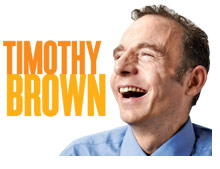 18. Timothy Brown
18. Timothy Brown
Otherwise known as “The Berlin Patient,” Brown was living in Berlin when he discovered he had HIV and, later, acute myeloid leukemia. With the help of German doctor Gero Hütter, Brown became part of an experiment to see if a stem cell transplant with cells genetically immune to HIV could cure him. The procedure eventually worked, and Brown returned to America—HIV-free. Declared officially cured in 2011, he uses his story to remind the world that eliminating AIDS is possible and that because it can be done in one, it should be done in all.
19. The Reverend Calvin O. Butts III
The pastor of New York City’s Abyssinian Baptist Church and a member of the Presidential Advisory Council on HIV/AIDS, Butts has a long history defending civil and health care rights. He was an instrumental member of the group that put together the National Black Clergy for the Elimination of HIV/AIDS Act of 2009 (see No. 70) and uses his position to fight AIDS in black America. Can we get an Amen?
20. The Cabinet
Time magazine called this unofficial group of gay billionaires with enormous political power “the gay mafia that’s redefining liberal politics.” The Cabinet can rock a vote like few groups tied to HIV can. Several of its members sit on the boards of prominent AIDS orgs (Henry van Ameringen is on the board of God’s Love We Deliver; David Bohnett is on amfAR’s board). The others—including Timothy Gill, James Hormel and Jon Stryker—are savvy about the issue. Given that HIV still disproportionately affects men who have sex with men, we need the wealthy gay elite back in the AIDS game to help influence Capitol Hill to keep the funding flowing.
21. Jim Campbell
The chair of the New England Association on HIV Over Fifty, Campbell is an expert on HIV and aging. Campbell speaks about—and to—a thankfully rapidly growing group: people with HIV who reach midlife and beyond. The good news is that you can live longer with HIV; the bad news is years of living with the virus and taking treatment (particularly the earlier drugs) can prematurely age a person and introduce special health concerns. Campbell inspires those who want to reach their 80s—and beyond—in good health.
22. Catholics for Choice
Abstinence is a fantastic way to avoid STIs. But let’s face it: It’s an unrealistic choice for many. Which is why abstinence education backfires as HIV prevention. Led by Jon O’Brien, who tore down Ireland’s restrictive contraception laws, Catholics for Choice lobbies against the Vatican’s anti-condom stance. The group launched condoms4life.org with the slogan “Good Catholics use condoms.” Opponents cried: This is where the rubber meets the road to hell. We say, let’s lay some rubber.
23. Clinton Health Access Initiative (CHAI)
We can stop AIDS if we can get HIV meds to the majority of people with HIV. But the drugs are expensive, and many HIV-positive people (and the nations many live in) are poor. Here’s where CHAI comes in. Established in 2002 by President Clinton as the Clinton HIV/AIDS Initiative (it was renamed in 2010), it is part of the William J. Clinton Foundation. Bottom line: CHAI tries to negotiate ARV prices down so “universal access” can, in fact, be more universal.
24. Chris Collins
The vice president of AIDS policy at amfAR is brilliant and has an insider’s access (he once worked for former House Speaker Nancy Pelosi). His days are spent on Capitol Hill helping both sides of the aisle understand topics like syringe exchange and why now is the time to heavy up investing in AIDS. Collins is a tireless, dedicated diplomat.
25. Congressional HIV/AIDS Caucus
Revived as Congress was sharpening its ax for drastic budget cuts to HIV/AIDS, the bipartisan HIV/AIDS caucus recruited many new members to defend domestic and global funding. Cochaired by Representatives Trent Franks (R–Ariz.), Barbara Lee (D–Calif.) and Jim McDermott (D–Wash.) it champions HIV-specific legislation focused on reducing stigma, expanding testing and eliminating criminalization. Here’s to our friends on the Hill!
Introduction | 1-25 | 26-50 | 51-75 | 76-100


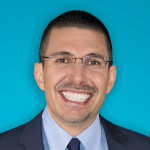

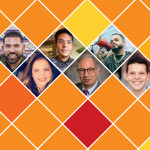
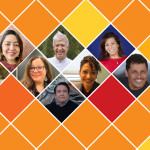
Comments
Comments